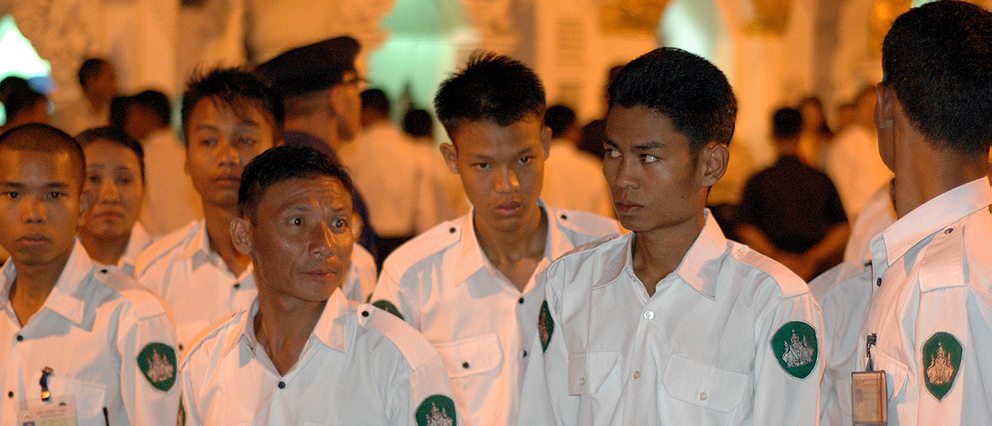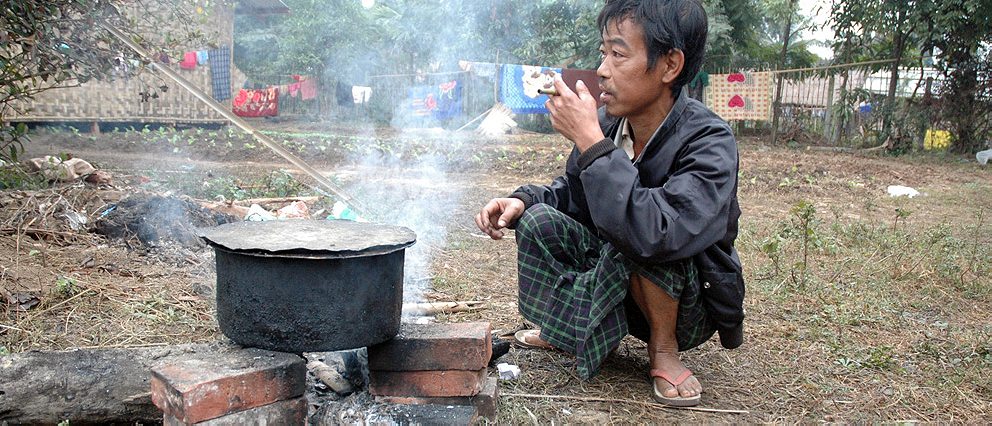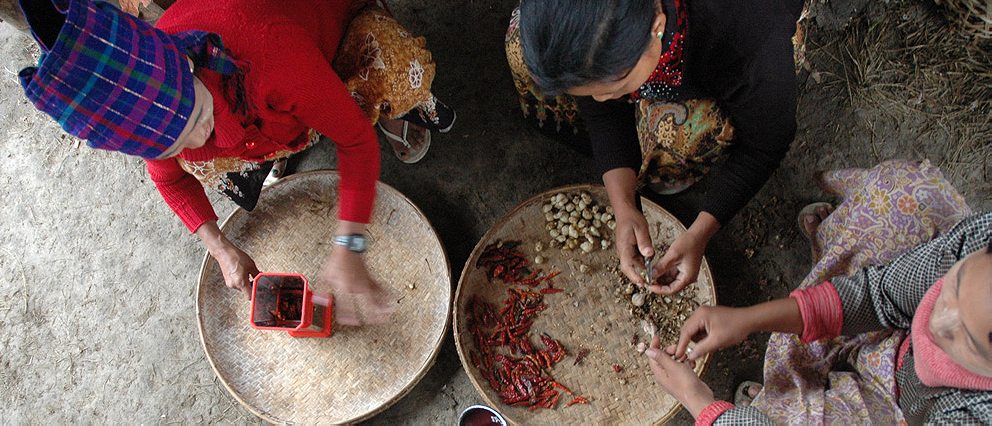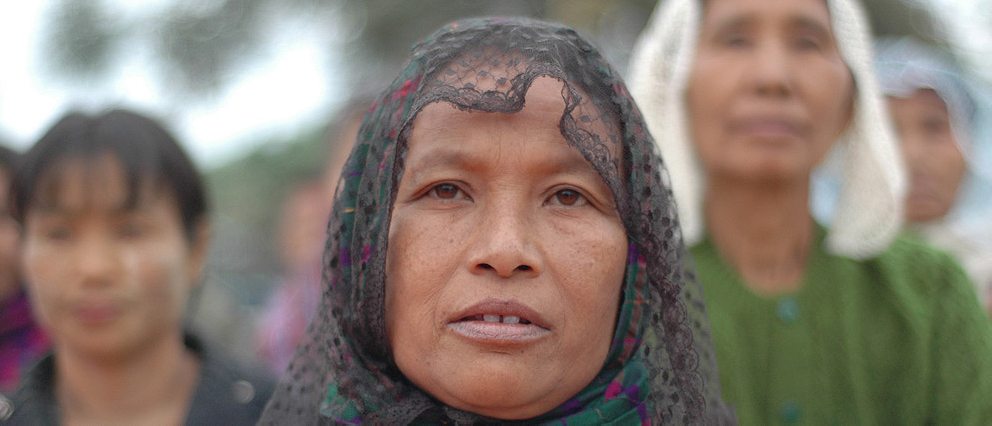Why Obama’s visit to Myanmar is premature. An R&K report from the Kachin civil war.
On Monday, Barack Obama will spend the day the same way his Secretary of State did when I was last in Rangoon last December: sweeping through the gold-caked Shwedagon Pagoda, meeting with Myanmar’s suddenly reformist leaders, and warmly embracing the paragon of suffering and democracy herself, Aung San Suu Kyi.
But Obama’s visit is different than Clinton’s. As Secretary of State, Clinton is supposed to make housecalls on all manner of lesser and major players, some sympathetics, some not so much. It’s her job to receive the limp handshakes of our frenemies in the Middle East, to endure the pomp of half-baked Central Asian dictatorships. Her visits say more about U.S. interests than about the countries she’s visiting.

But a visit from a U.S. President, especially for a small and isolated country like Myanmar, is something quite distinct. It is an honor, a diploma, a certificate of achievement.
For all those reasons, this visit is a very bad idea. And if you want to know why, then come with me 600 miles to the north, to a bluff overlooking the Irrawaddy River. Let’s visit with Auntie.

From the middle-distance, Auntie doesn’t look all that dissimilar from Aung San Suu Kyi. She has the same stake-straight posture, a similar sadness around the eyes, an equal measure of calm in her speech.
Their fathers even knew each other. Aung San Suu Kyi’s father was General Aung San. He was an ethnic Burman who, after the war, had won the trust and loyalty of the many ethnic groups that comprise the country. More than a national hero, he was a uniter. From the northern jungle to the southern beaches, he is still know just as Bogyoke—General. His idea was to cobble together a country that could be majority Burmese and majority Buddhist but still share power with the Christians and Muslims and the dozens of nations within its borders.
In order to do that, Aung San needed the loyalty of men like Auntie’s father. He was a freedom fighter himself, a leader of the Kachin, a Christian minority that lives in the jade-filled mountains of the north and here, in Myitkyina, their capital city that lies along the first miles of the mighty Irrawaddy River. And though the Kachin people had clashed with the Burmese for generations, there was hope just after World War II that both sides could be free of British colonial rule and coexist in a new nation together. The Kachin earned their seat at the table the hard way: their legendary guerilla force, the Kachin Rangers, had fought for years behind Japanese lines, tipping Northern Myanmar in favor of the allies, helping pave the way for modern Myanmar.
Auntie’s father, like the rest of the Kachin people, trusted Aung San. But the possibility of a truly equal Myanmar died on July 19, 1947, when Aung San was gunned down by the first in a line of kingslayers and traitors who would go on lead Myanmar into ruin over the following decades.

It is because of that military coup 65 years ago that I am calling this woman Auntie. She doesn’t want her real name used because her Kachin people, and its Kachin Independence Army (KIA), are in open war with the Burmese government, as they have been for most of the years since Bogyoke’s assassination. War is all around her now. Myitkyina is both the capital of Kachin State, and the headquarters of Myanmar’s northern command, which is at war with those Kachin people. Talk in whispers and warn of informants. The army clearly knew of my presence, one Kachin priest had told me, because they altered the schedule of their checkpoints, waiting to set them up in the center of town until I had gone back to the YMCA each night. “You are being watched,” he said. The army did not want to me see these checkpoints, which consist of armed soldiers at barricades asking drivers if they are ethnic Kachin. “I’m furious,” said the priest. “They think we’re all KIA.”
I chose the name Auntie because it was her nephew who picked me up by motorbike at the YMCA in Myitkyina. He drove on backroads, slipped us out of town over rutted paths to avoid soldiers, rode past the site of the bomb blast of Nov. 13 of last year (the Burmese called it a Kachin terrorist strike; Auntie says that witnesses heard telltale sounds of artillery just before the blast—a sign that it was a government attack) that killed 10, and into the near villages where scores of internal refugees, Kachin farmers chased from their homes by the fighting, were being housed in makeshift refugee camps. We arrived at her home. There was a portico but no gate, ducks walking around the wide yard, and a verandah looking out over a great stretch of the Irrawaddy, the Mississippi of Myanmar, which gathers strength in the Kachin lands before thundering down into the lowlands. In the distance, I could see a small tent city of gold miners who had come to pan the river’s far shore. After a moment, I turned back to the house, and there, to receive me, was Auntie.

There are many who are enthusiastic about the progress that Myanmar has made so far. I am one of them. Consider the rapid improvements in human rights, in freedom of speech, in free and fair voting. The authorities didn’t just release Aung San Suu Kyi, they allowed her to run for parliament, and win. When I first visited Myanmar in 2003, it rivaled North Korea as one of the grimmest and most isolated regimes on earth. To look at it now is to be astounded, almost overjoyed, that an end to the long suffering might be at hand.
There must be tremendous temptation for Obama to ally himself personally with this progress. The Middle East smolders, China gathers like a storm, and there are precious few countries that appreciate America’s moral guidance on any topic. But if you visit Rangoon these days, it can feel like we’re living in the time of Mahatma Gandhi. A prisoner of conscience has won the fight for her country’s future.
But ask Auntie about Aung San Suu Kyi, and you’ll get the same response that you get from a lot of Kachin people: they are wary. Yes, they respect her. And they adored her father. But there are signs that the democracy Suu Kyi has fought so hard to win may come at the Kachin’s expense. Under military dictatorship, it was often Buddhist against Buddhist, as the ruling junta and its leading political foes were all Burman. But even if the true majority gets to rule in Myanmar, their vote may be against the ethnic groups, particularly those who are agitating for more rights. As N-Sang Gum San, Foreign Affairs Secretary of the exiled Kachin National Organization put it, “it’s a change of warfare. In the past, the government attacked the democratic opposition. Now they are cozying up to the democratic forces, and beginning to isolate us.”
“I don’t see this as a a genuine reform, but rather a change in front,” he says. Even in the reformist government, he says, “There is a faction that wants to wipe us out.”
Suu Kyi, her defenders say, is in a delicate situation. She can only solve so many problems at one time. First fix the structural problems of democracy, then work on the ethnic issues. But in the wake of the widespread anti-Muslim violence in Rakhine State, which met with only tardy and tepid response from Suu Kyi, it’s fair to ask how long the ethnic minorities of Myanmar will have to wait. As journalist Andrew R. C. Marshall has been brilliantly reporting from Rakhine, the rising violence against minorities like the Muslim Rohingya is not a spontaneous outbreak, but rather, it is organized and endorsed by the very government that Obama is rewarding with his visit.

There had been peace between the Kachin and the government in recent history. There was a 17-year ceasefire that only broke down in the first wave of killings last summer. The ceasefire collapsed, I was told time and again, because the government had used the lull to consolidate its own power over Kachin State. It tried coopting the KIA by making them border guards to the north. But the real danger came from the kleptocracy of the central government, who sold the jade-rich lands en masse to the Chinese, say the Kachin. The government tried to start a massive dam project at Myitsone, again to feed Chinese appetites for power, and only stopped after a Kachin, and eventually international, outcry.
“Most of our Kachin land has been sold to the Chinese,” says Auntie.
These are the things, far from the media cluster in Rangoon, that Auntie says the West doesn’t recognize. And this, for her, is an old tragedy. When her father was in the leadership in the 1970s, he could only travel on forged passports, from Paraguay, Nepal, Malaysia. “The U.S. thought he was an opium kingpin,” she says. He and his comrades couldn’t get an audience with the U.S. at all. But the isolation wore on them, so the Kachin people stepped up their outreach with neighboring Yunnan Province in China, which back then was less rapacious in its dealings with Kachin state.
Auntie made numerous visits to Yunnan—“they treated us like a neighbor government”—and it was there, while on a tourist boat on the Pearl River, that Auntie happened to meet a West German diplomat. West Germany had been sending millions in aid money to the dictator Ne Win since the ‘70s, for reasons that had mostly to do with naiveté, and Auntie says that money was being funneled into weapons used against the Kachin and the Karen people. “At that time, we were like a sinking person with just a straw,” she says. “There was so little hope.” But that chance encounter on the Pearl River led to a series of meetings in Germany between Auntie’s father and representatives from Germany’s Bundestag. They eventually tried to mediate the conflict, and when they found the Burmese unwilling, they stopped sending the aid. Call it the power of disengagement: the Burmese majority sometimes needs to be forced to stop killing its neighbors.

There are currently up to 100,000 Kachin refugees who have been forced from their homes—out of a total population of less than a million. The Northern Command continues to maintain front lines: tanks, troops, outposts, throughout Kachin country. The KIA blows up bridges to stop the tanks, the government attacks villages, and farmers like La Sang Naw, who was a corn and mustard seed farmer near Taloggyi, are forced to flee. “We want to go home,” he told me at the St. Paul refugee camp. “But we don’t know when the soldiers will be back. And so men and boys are still in special danger in the villages.”
The Myanmar that Obama visits today is not just Rangoon; it’s also Myitkyina.
I couldn’t reach Auntie by phone in the week leading up to Obama’s visit. So I can’t say exactly what she would say about the developments. But I imagine her sitting on her verandah over the Irrawaddy, watching the gold miners in the far distance, and thinking: does anyone know we’re here?